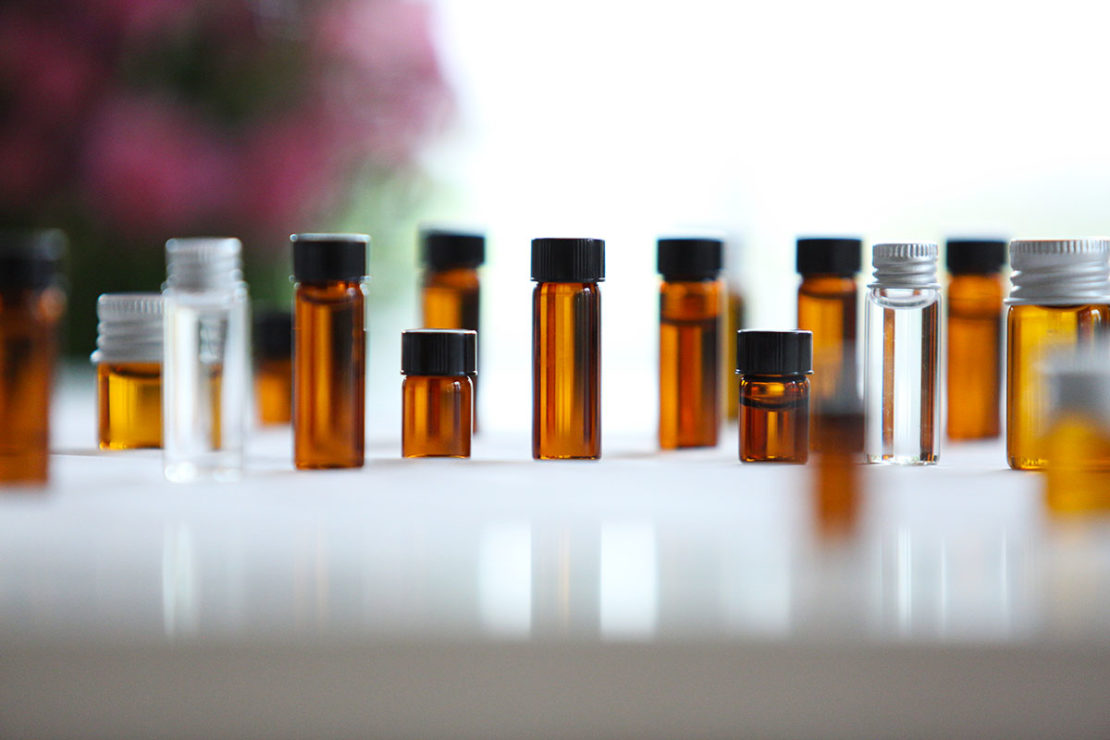
Essential Oil Terms To Know: How To Use “Dilution,” “Dispersion,” and “Dose” Correctly
If you have read much about the use of essential oils or essential oil safety, you have undoubtedly encountered discussions regarding “diluting” essential oils for topical use by mixing a certain amount of essential oil in a carrier oil. This is only one of the important “d-“ words regarding essential oil usage and safety, the other two being “dose” and “dispersion.” It is important to understand how these words relate to each other and how they are often used incorrectly.
Essential Oil Terminology: Dilution
The easiest way to picture what dilution means is to think about frozen fruit juice concentrate you buy at the store. This concentrate is too strong to eat or drink straight out of the can, but when you add a certain amount of water, you dilute the juice to a drinkable concentration. Some people may prefer the juice more dilute while others may prefer it more concentrated. Either way, the end result contains more water than does the original concentrate.
The essential oil is like the frozen juice concentrate. It needs to be diluted with a carrier oil the same way that the frozen juice needs to be diluted with water. Essential oils are diluted for several reasons—the most important of which is to prevent skin irritation or sensitization that can occur when essential oils are used in high concentrations.
In aromatherapy parlance, dilution refers to a ratio of the amount of the substance being diluted (the essential oil) to the substance diluting it (the carrier oil). With essential oils, this is usually given as the percentage of essential oil in the carrier. For instance, a 1% dilution means that there will be one drop of essential oil for every 99 drops of carrier, or 1 out of 100 drops total.
Essential Oil Terminology: Dispersion
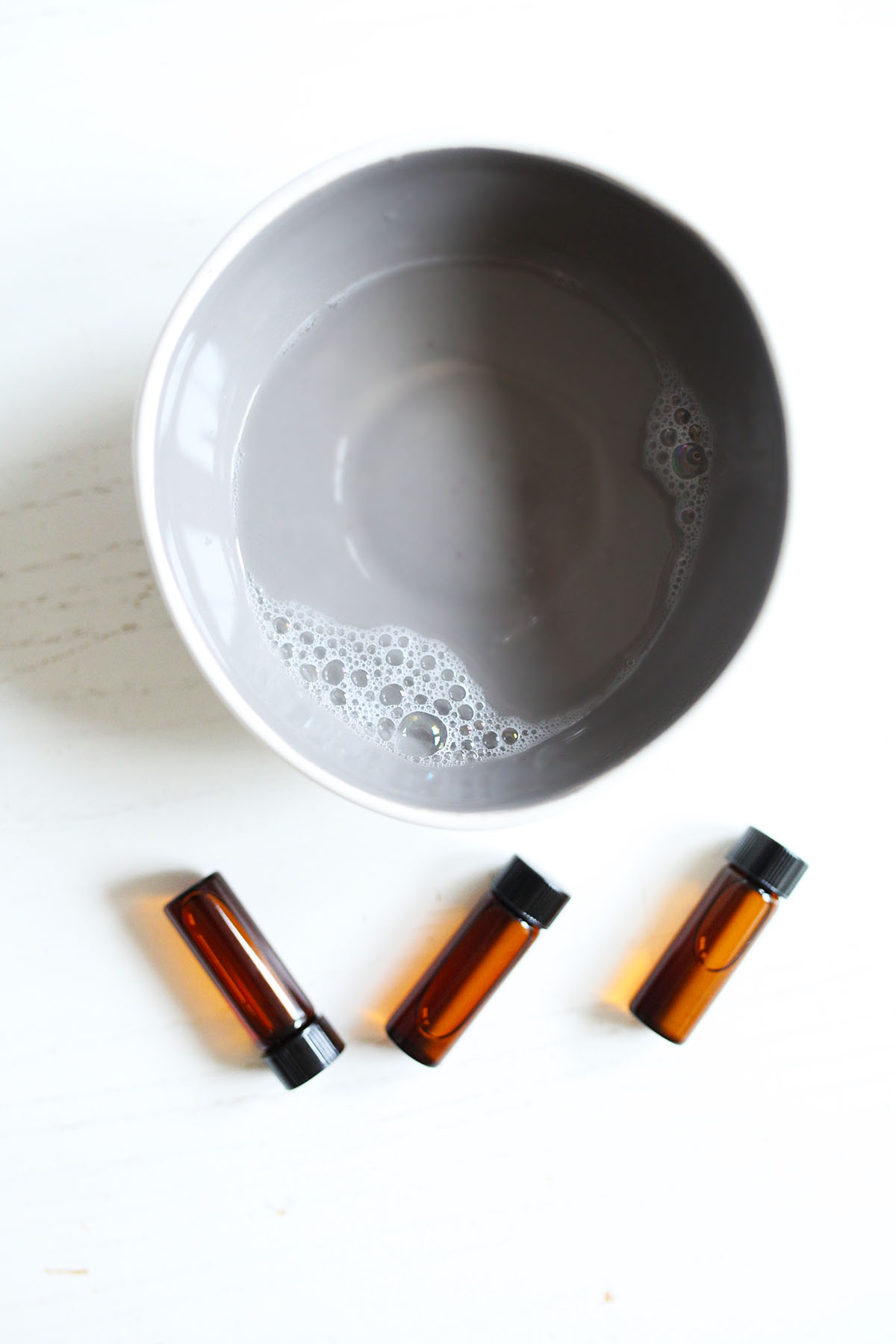
Although you can dilute the frozen juice concentrate when you add water, it is not dispersed until you stir the mixture carefully. Dispersion of the essential oils is another important factor to consider when it comes to using essential oils correctly.
Essential oils are usually diluted in a fixed, vegetable oil as they are oil-soluble. Once the essential oil and fixed oil mixture is stirred together, the essential oil will be evenly distributed throughout the mixture, just like the juice after the juice-water mixture is stirred.
This is why it is so important to choose an appropriate carrier for your chosen essential oil application. Essential oils are not soluble in water, so they will not disperse evenly in water, alcohol, or a similar non-oily carrier, just as oil and water will not stay mixed.
Some people have recommended using honey or bath salts to disperse and dilute essential oils in water-based carriers, but this does not work. In order to suspend water in an oil or vice versa, one must make an emulsion. The only way to keep an essential oil emulsion stable is to add an emulsifier, such as Castile soap or shampoo, or a dispersant such as Solubol or Disper.
This is not necessary for applications that will not come in contact with skin such as room sprays, which can be thoroughly shaken before each spritz. For those applications that have a topical, dermal component, diluting and dispersing the essential oil in an oily carrier is really the easiest and best option. Light fixed oils such as fractionated coconut oil can even spray through the nozzle of most aromatherapy or cosmetic spray attachments.
If your essential oil is not fully dispersed throughout the mixture, it is not properly diluted. That means you could apply some of your blend and end up with much more or much less of your essential oil than you had anticipated or intended. The carrier oil also helps protect the skin from irritation, so you want the essential oil dispersed in the carrier when it is applied, not applied as a glob of pure essential oil that has separated out.
Essential Oil Terminology: Dose
Dose requires more information than we usually see with essential oil recipes. Dose takes into account both amount and time, as well as any contraindications. Think of the “dosage instructions” on a bottle of medicine in your cupboard. It will say how much of the active ingredient is in “one dose,” how much of the mixture you will take, how often you will take it, and who can or cannot take the mixture.
Inhalation doses are difficult to measure. Aromastick dosages are usually given in terms of how long one should inhale from the stick for each application, as well as how frequently to repeat the inhalation process.
For topical applications, you can use a well-dispersed oil at a 1% dilution, and still get a different dose of essential oil depending on how much of the mixture you use over a given period of time. For example, consider a one-ounce (30ml) bottle of a mixture containing 6 drops (a 1% dilution) of essential oil as the active ingredient. If you apply 1 teaspoon (5ml) of the mixture to your skin, you will have a dose of 1 drop of essential oil. If you use the whole ounce, you get a dose of 6 drops. If you apply 1 teaspoon every 20 minutes, you will experience a dose of 6 drops within 1 hour 20 minutes. If you apply 1 teaspoon, once a day, it would take you 6 days to be exposed to 6 drops of essential oil. Dose is much more than dilution!
Putting It All Together
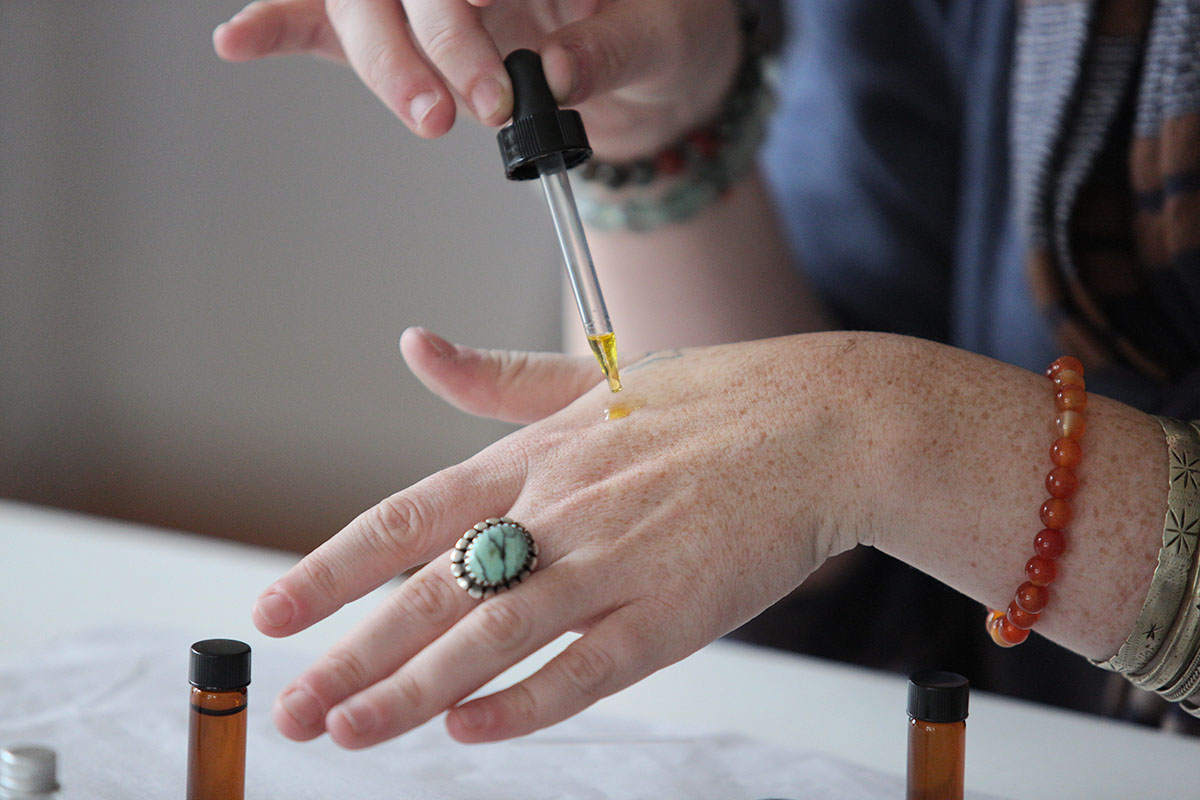
How are dilutions calculated? Dilution safety guidelines are usually based on the amount of essential oil one would receive if one applied 30ml or one ounce of mixture within a 24 hour period (Tisserand & Young, 2014). These dilutions come to us predominantly from the cosmetics and fragrance industries where large amounts of the mixtures, lotions, creams, or sprays, are applied on large areas of skin with few or no restrictions.
However, this does not mean that if you use only 1/2 an ounce of a product, that you can use twice as much essential oil. Although the toxic DOSE of essential oil for any given oil may be fairly high, when using essential oils topically, skin reactivity is a more important consideration (Tisserand & Young, 2014). This is the big reason why appropriate dilution of essential oils is so very important.
Determining safe dilution levels takes into account how likely an essential oil is to irritate the skin or cause a sensitization reaction, as well as overall dosage delivered over time. Dilution guidelines should be followed closely when the risk of skin irritation is a concern. Essential oils with high irritation concerns like oregano (Origanum vulgare) need to be diluted more than others in order to protect the skin or mucous membranes (Tisserand & Young, 2014). If dosage needs to be increased for these oils, other variables need to be considered, such a greater amount of mixture being applied over a larger area of skin, or the mixture being applied more frequently, or both. These can increase dose without changing dilution.
For essential oils with low irritation concerns, a somewhat stronger concentration of essential oil can be used in a small location and for a short time, such as when using lavender to reduce inflammation for a bug bite, but using the lowest effective dilution is always the best. Some essential oils, such as lavender (Lavandula angustifolia), can also be used at lower dilutions for a longer period of time without concern (Tisserand & Young, 2014).
The age, health, and skin condition of the person receiving the application are also very important considerations, both for dilution and overall dose. Young children and the elderly have skin and metabolic processes that are less effective than those of a healthy adult (Beath, 2003; Pineiro-Carrero & Pineiro, 2004; Siddiqui, n.d.). This means that some essential oils, which may be appropriate for Mom, may not be a good choice for Baby or Grandma. Likewise, even when the same essential oil can be used, the dilutions will not be the same for each person, nor for each essential oil.
Once dilution is determined, one must still consider how the body is metabolizing that essential oil. Toxicity is important to consider when determining dosage for some essential oils, which may be used at a given dilution, but should be used only for short periods of time and only for acute needs in otherwise healthy people.
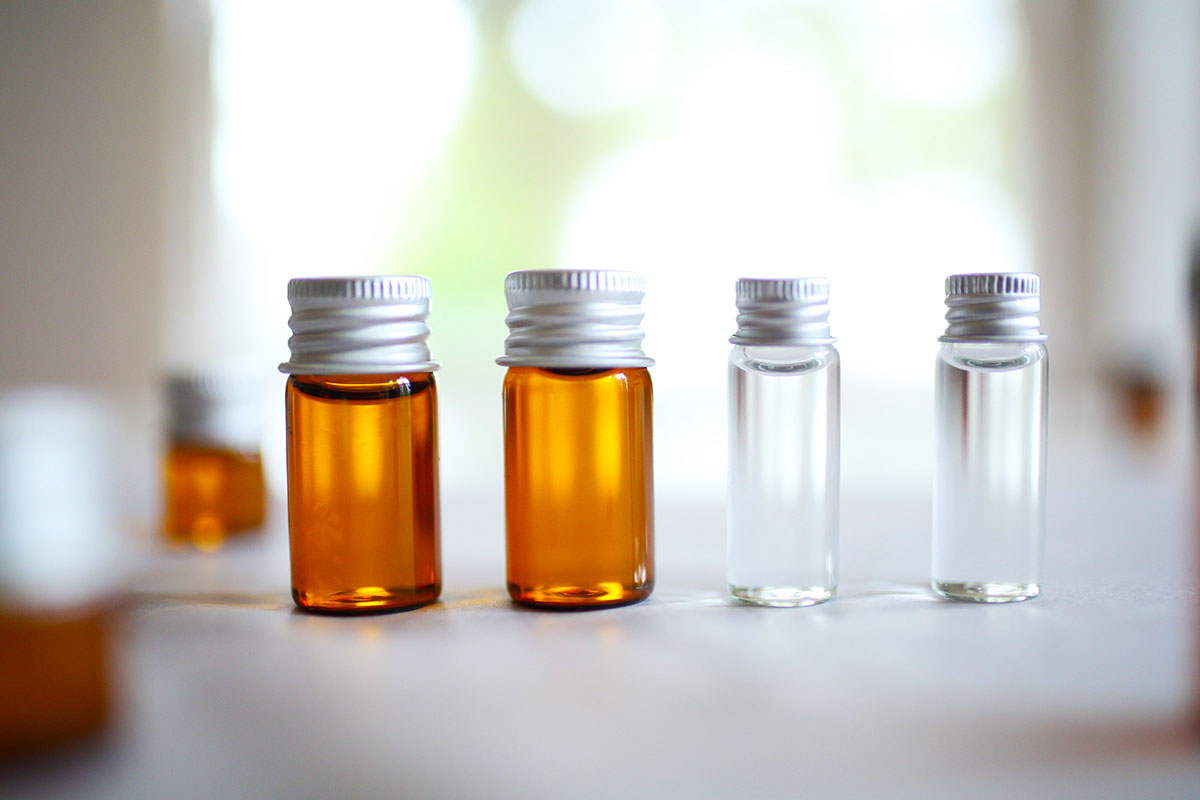
To put it all together:
“Dilution”
- Dilution is a ratio of essential oil to the mixture, usually described as a percentage.
- Dilution levels are usually determined to protect skin from irritation and sensitization.
- If the essential oil concentration is increased, it should be used on a smaller surface area of skin and for a shorter period of time, such as with acute use.
- Lower dilutions should be chosen for more chronic or larger area applications.
- Safe dilutions depend on the choice of essential oil, the purpose of the mixture, and the age, health, and skin condition of the individual.
“Dispersion”
- Essential oils can be dispersed properly in an oily carrier base.
- Essential oils that are mixed in water, aloe vera gel, or alcohol should not be used on the skin without an emulsifier or dispersant. (Essential oils can be dispersed better in a thick aloe vera jelly as opposed to the usual aloe vera gel.)
- Essential oil and water or alcohol blends that are designed as room sprays must be shaken well before each use.
“Dose”
For proper dosing you need the following information:
- How much active ingredient is in each application.
- How much total mixture to apply.
- How frequently to apply the mixture.
- How long of a period to continue applying the mixture.
- Any special guidelines, such as who can or cannot use the mixture, as well as any contraindications.
Even when essential oils are properly dispersed in an appropriate carrier at an appropriate dilution ratio, that is still only part of the story for therapeutic applications. A complete picture of using essential oils effectively in any given situation will also include dosage information, which has time elements and usage guidelines.
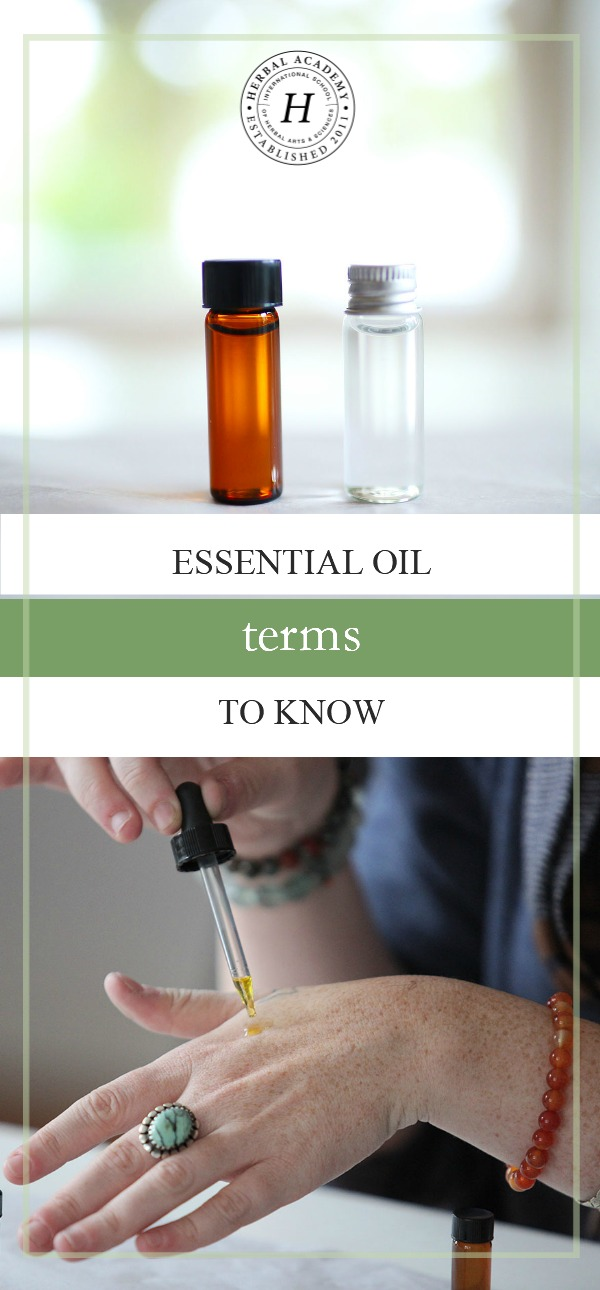
REFERENCES
Beath, S. (2003). Hepatic function and physiology in the newborn. Seminars in Neonatology, 8(5), 337-346.
Pineiro-Carrero, V., & Pineiro, E. (2004). Liver. Pediatrics, 113(3), 1097-1106.
Siddiqui, A. (n.d.). Effects of aging on the liver. Merck Manual (Consumer Edition). Retrieved from http://www.merckmanuals.com/home/liver-and-gallbladder-disorders/biology-of-the-liver-and-gallbladder/effects-of-aging-on-the-liver
Tisserand, R., & Young, R. (2014). Essential oil safety: A guide for health care professionals (2nd ed.). London, UK; Churchill Livingstone.








